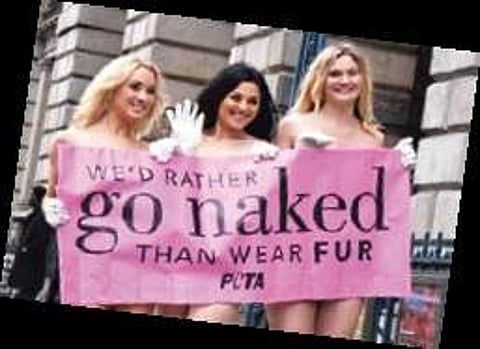

In the parable of the beauty and the beast lies the conundrum of beauty in the beast. The animal rights group, People for Ethical Treatment of Animals (PETA), is determined to see only ugliness in Jallikattu, its vision coloured by its mandate. It repudiates the cultural fury of the Tamils, not just in the state but all over the country. It has sworn to seek a legal route to block the state ordinance allowing the age-old bull contest. Herein lies the Epimenides paradox; does PETA fight for the rights of all animals, too? Obviously not.
The contradiction is that the organisation is selective in its compassion towards animals. Especially towards those under its care. PETA gained notoriety when its practice of ‘mercy killing’ of dogs and cats under its care was exposed in Britain and the US. A couple of years ago, a report by The Center for Consumer Freedom on PETA’s euthanasia record in just one of its shelters in Norfolk, UK, showed 82 per cent of its hapless dependants were put down. PETA’s policy remains unchanged since 1998. Over 31,000 animals, which the animal rights body claimed were injured or unadoptable, were killed for mercy’s sake between that year and 2013. A similar method of elimination is adopted by most Indian animal shelters, too.
So, “kill ‘em and be done with it” is the PETA argument. The poor dumb animals are too much of a financial burden. Tamil Nadu has been boiling since Jallikattu was banned. Ironically, in the same country, goshalas protect barren cows from facing an Orwellian Animal Farm fate.
PETA’s euthanasia policy, based on its lack-of-funds excuse, is puzzling since it reportedly has a billion-dollar budget. Media reports have also revealed it spends only around 1 per cent of it on animal welfare. In many shelters in the US, too, around 90 per cent of the animals are slaughtered. PETA-associated activists have firebombed buildings, attacked restaurant workers, inviting the FBI’s “terrorist” tag as far back as in the early Noughties.
When idealists begin campaigns for reform, the roads are paved with good intentions. Amnesty International, Greenpeace and PETA are organisations which were built on the foundations of compassion and freedom. They have done path-breaking work in their fields. However, as funds and influence grew, they became ‘cause operations’ with a clear agenda to increase their influence sphere, even by manipulating government policy through domestic units. Their finances are far from transparent. All of them receive huge grants from pressure groups and lobbyists. PETA’s publicity campaigns involve actors, singers, super models and other celebrities to create maximum shock value. Many of their crusades against animal testing and fur have been stellar victories. However, as the wardens of conscience, they are taking activism to a level where no black and white exists, and compunctions are both fussy and fuzzy.
PETA stands firmly in the limelight of the animal cause. On the other side of midnight, PETA stands for its own cause first.
It has unwittingly unleashed a youth revolution, the kind of which has never been witnessed in post-Independence India so far. The young protestors at Marina Gate have rejected the ambassadorship of political parties, which want to seize the bull by its horns for their advantage. The youth movement is a defence of tradition and identity, which rejects expedient politics. The bull has united people, but not in the manner PETA would’ve expected.
ravi shankar
ravi@newindianexpress.com